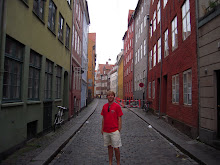Thus opens Rashômon. This stark, wandering and vague philosophizing prepares the audience for a similarly answerless narrative. It begins with the woodcutter telling his tale about finding the body. Akira Kurosawa thematically ties the visuals with the narrative by deploying a tracking shot aimed straight into the sun. It’s as if trying to find truth is as blinding and difficult as staring into the sun. This shot is equally powerful to the one where the woodcutter finds the body: the camera, at a low-angle, is where the face of the unknown (at the time) victim should be, his hands raised in the final moments of self-defense. This creates a menacing frame for the camera, and the woodcutter’s expression mirrors that.

This ominous pose suits the story well, and when each character begins to spin his or her version of how the samurai died, the lurking feeling remains that we will never find out or discover the meaning. The four different takes of the same event add an interesting dimension to the discourse about subjectivity and truth. Ultimately, nothing is really concluded about what actually happened, but what is concluded is a commentary about human nature. The existence of these different, subjective truths, in an existential sense, makes the search for meaning all the more difficult. When the woodcutter relates that he “doesn’t understand his own soul”, it couldn’t be more clear that the events that conspired shook him to his core.
Kurosawa often places the camera in such a way that it visually links the audience with different characters; in a way, Kurosawa personifies the audience. When the woodcutter originally finds the body of the husband, for example, he stares down directly at the camera, in front of which is the husband’s hand. Later on, during the bandit’s retelling, he relates how he overtook the wife and began raping her. During these initial frantic moments, the camera, aimed up at the sky, spins around in circles, making us the wife and her world spins out of her own control. In both these moments, we are victimized, an interesting contrast to what we visually become during the trial scenes. There, the defendants sit on the ground before us in extremely vulnerable positions, and answer questions that we don’t hear but they can. The characters are relating their stories, confessing their “truths” to a voiceless character. The film strips away the middlemen: we, the members of the audience, are truly the ones who will judge the characters.

At the same time, however, Kurosawa makes sure, through his camera personification and our exposure to all these different stories, to make us experience each subjective truth of the characters as fully as possible. And, since no one truth results from all the recountings of the murder and rape, this disturbs the characters and us. The profound effect that is made on the woodcutter and the priest has more to do with the differing claims of each character than the actual crimes committed. The fact that each character’s tale cannot be true, but they nonetheless stand by it and subsequently paint each other with such inhumane strokes really shakes the third parties, and, ultimately, the audience.

No comments:
Post a Comment